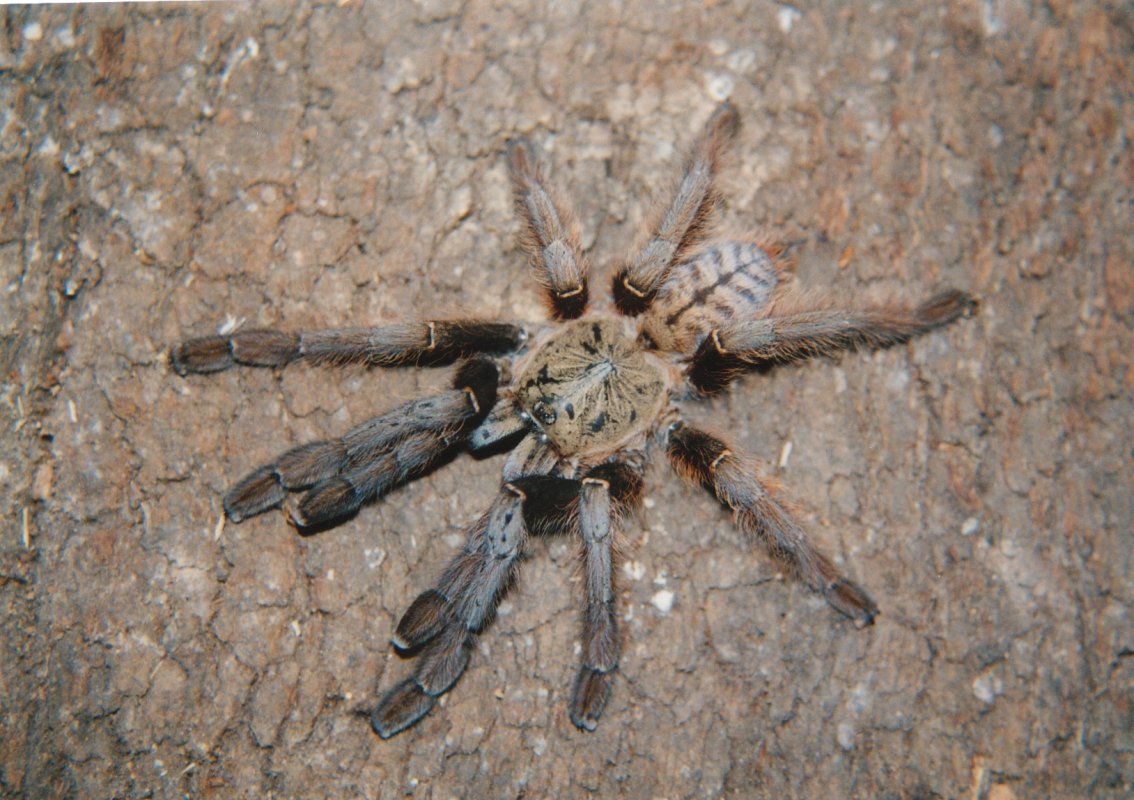
Phormingochilus everetti(Phormingochilus everetti)
Phylum —arthropoda
Class —arachnida
Order —araneae
Family —theraphosidae
Genus –phormingochilus
Appearance
This species is a rich chestnut brown, with dark legs that has beautiful red hairs creating a vivid contrast. The abdomen has the trademark "tiger stripes" of Ornithoctoninae.
This is a large spider with a leg span of 20+ cm. and a carapace length of about 3 cm.
Habitat
It lives in the states of Brunei, Sarawak and Sabah in Malaysian Borneo.
Behavior
Like all arboreal species, it lives on tree trunks, in hollows, between tightly intertwined branches. Only the young ones can live in the lower areas. These places can be located in various crevices in rocks, under the bark of trees, or in artificial structures such as bridges, benches. Spiders lead a nocturnal lifestyle.
Diet
It preys mainly at night on insects and small rodents of a suitable size.
Reproduction
Mating should be done in the spring. It is common that the female eat or destroy the male after mating and this is usually a sign of a successful mating. After mating the cage should be dried out for a month or two followed by a raise in humidity. This will usually induce egg laying, typically in late summer/autumn. The egg sac will hatch after 2-3 months and contains between 100-150 spiderlings.
In captivity
Lifespan is approximately 6-8 years for females, slightly less for males.
Keeping them at home you should follow the general rules of the breeding of spiders.
Small individuals are kept in saucepans or containers of a suitable size. For more adult individuals, you need to install a horizontal type of terrarium with a height of at least 30-35 cm, but you should not buy too large either the spider will get lost in space and may not find food for a long time.
The temperature regime is required to keep within 24 to 29 oC. The humidity should be kept at 70-80%, which is quite high. The installation of a drinking bowl with a wide base and watering terrarium is enough.
You need to install a shelter; it can be a piece of bark or snag. At the bottom of the terrarium, you also need to put a loose substrate.
The main mass of insects serves as food objects, the most common of them are cockroaches, crickets, and zophobas. Young individualsare fed once every 2-3 days, re adults must be fed less often, about once a week.
The spider is nervous and toxic, it is not recommended for purchasing by beginners.
 Russian
Russian
 English
English
























